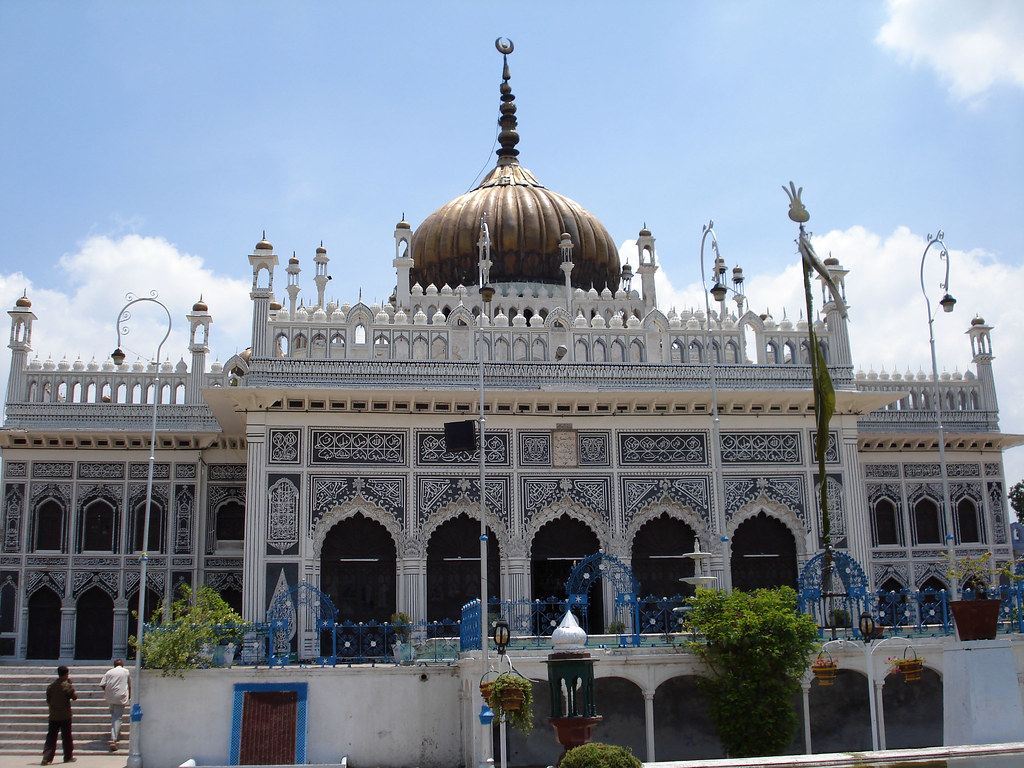Chota Imambara: Nestled in the cultural heart of Lucknow, the Chota Imambara, also known as the Imambara of Hussainabad, stands as a testament to the architectural finesse and cultural opulence of the Nawabi era. Built in the 19th century, this exquisite monument reflects the artistic prowess of the time. Join me on a virtual journey to explore the beauty, history, and cultural significance of the Chota Imambara, where each dome and minaret narrates tales of an era gone by.
“Discover the architectural marvel of Chota Imambara, a stunning Shia Muslim shrine in Lucknow, India. Admire its intricate design, ornate domes, and serene surroundings. Immerse yourself in the rich history and cultural significance of this iconic landmark. Plan your visit to experience the beauty and spirituality of Chota Imambara firsthand.”
Architectural Marvel: Chota Imambara
Commissioned by Nawab Muhammad Ali Shah in 1837, the Chota Imambara is a splendid example of Mughal and Awadhi architecture. The monument’s design seamlessly blends elements of Persian, Indian, and Islamic architectural styles. The central hall, adorned with intricate calligraphy and ornate decorations, stands as a majestic chamber of elegance and grace.
The Glittering Chandeliers: Chota Imambara
Upon entering the central hall, visitors are greeted by an awe-inspiring sight—the resplendent chandeliers that dangle from the ceiling. These grand chandeliers, adorned with fine glasswork and intricate designs, illuminate the hall in a soft, golden glow. The play of light against the ornate interiors creates a captivating ambiance that transports visitors to the grandeur of the Nawabi era.
Glistening Mirror Work: Chota Imambara
The walls of the Chota Imambara are adorned with elaborate mirror work, known as ‘Aina-Kari’ or glass mosaic work. The shimmering mirrors, set in colorful patterns and geometric designs, reflect the light and create a dazzling effect. This intricate craftsmanship adds a touch of regality to the monument’s interiors.
The Silver Throne:
At the heart of the central hall sits the exquisite silver throne, an iconic symbol of the Chota Imambara. The intricately crafted throne, adorned with silver sheets and delicate patterns, is a masterpiece of silverwork. The throne was originally used by the Nawabs during religious and ceremonial occasions, adding a touch of royalty to the monument.
Tomb of Nawab Muhammad Ali Shah:
The Chota Imambara also houses the tomb of Nawab Muhammad Ali Shah, the benefactor of this architectural marvel. The tomb, surrounded by a peaceful courtyard, features a beautiful water tank that adds to the serene ambiance of the complex. The tranquil surroundings provide a space for reflection and spiritual contemplation.
The Chota Imambara in Lights:
During special occasions and religious festivals, the Chota Imambara comes alive with a breathtaking display of lights. The monument is beautifully illuminated, creating a mesmerizing spectacle that attracts visitors from near and far. The play of lights accentuates the intricate details of the architecture, turning the Chota Imambara into a luminous jewel in the heart of Lucknow.
Cultural and Religious Significance:
Apart from its architectural splendor, the Chota Imambara holds immense cultural and religious significance. It serves as a place of worship and congregational prayers for the Shia Muslims during religious events. The monument’s serene ambiance and spiritual legacy contribute to the vibrant cultural tapestry of Lucknow.

Conclusion:
The Chota Imambara, with its architectural finesse, intricate craftsmanship, and cultural significance, stands as a jewel in the crown of Lucknow’s heritage. Whether you’re admiring the glistening mirrors, marveling at the silver throne, or basking in the glow of the chandeliers, each facet of the Chota Imambara transports you to a time of elegance and cultural opulence. In this haven of serenity and artistry, the Chota Imambara invites all who visit to partake in the grandeur and cultural richness of Lucknow’s Nawabi legacy.

